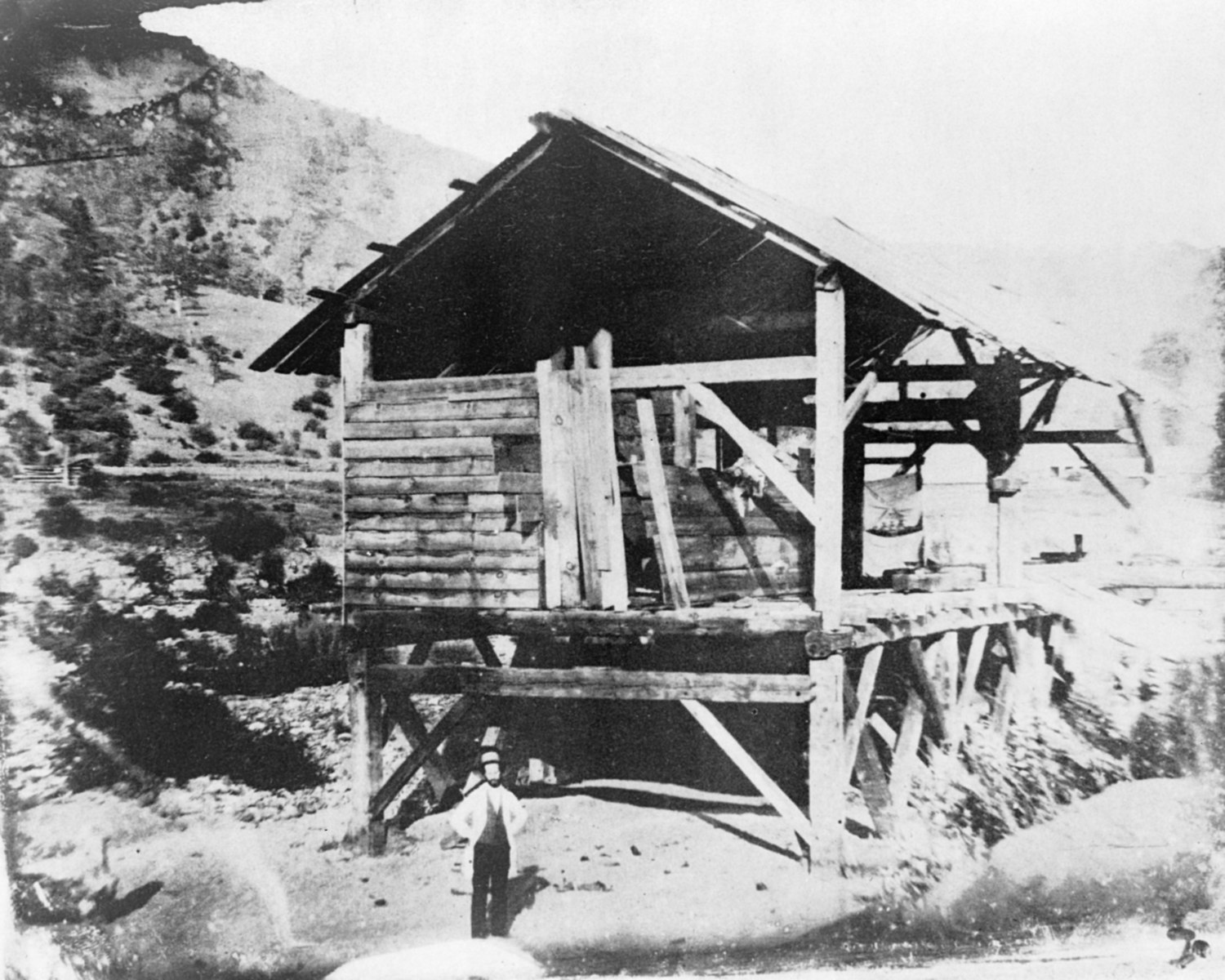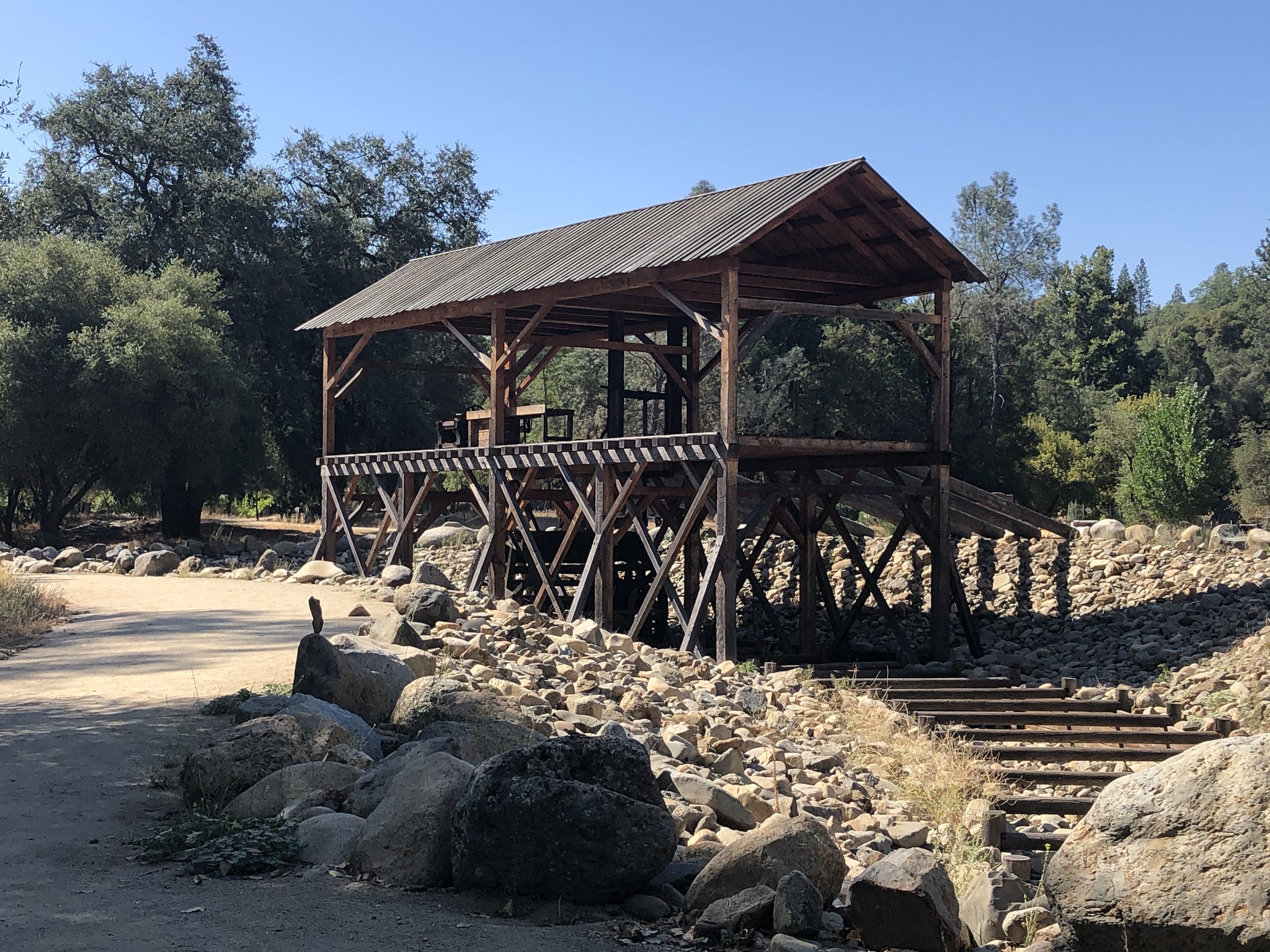|
   |
|
Page 6 |
Newsletter 142 August 2023 © Hampshire Mills Group |
|
Watermill Triggers Gold Rush
Ashok Vaidya
|
|
On
a recent visit to Sacramento in California I spent
time at a local museum hearing from the guide the
fascinating story of the development of the
transcontinental railroad – and the push from the
west starting in Sacramento to go up and over the
Sierra Nevada mountains and the Donner Pass. This
was the infamous location of the stranding of a
party of settlers through the winter of 1846, which
led to reports of cannibalism and the deaths of 29
of the 87 strong group.
The guide then made a statement which for anyone
interested in mills would have triggered instant
attention. “The discovery of a gold nugget in the
workings of a mill leat set off the California
‘49ers Gold Rush”. Although the story is well known,
it was new to me and so I thought I would describe
the events in this article.
|
|
John Augustus Sutter was a Swiss-German immigrant
who became a citizen of first Mexico and then the
United States. In 1839 he arrived in California
which was then part of Mexico, and got permission to
found a settlement in the Central Valley, named New
Helvetia after his country of origin, a place now
part of Sacramento. Sutter’s Fort was the centre of
a ranching and farming development, relying on local
native American tribes for labour. Sutter’s
treatment of the indigenous people would not be
acceptable today – or even in those days – but that
is outside the scope of this narrative.
The defeat in 1846 of the Mexicans in the war with
the Americans led to California becoming part of the
USA. Through this Sutter was encouraging white
settlers from the east to come to California and he
set about building businesses that catered for their
needs.
One key requirement was timber for house building
and Sutter decided to build a sawmill in a forest
about 30 miles north east of New Helvetia, on the
banks of the South Fork of the American river. This
was to be water powered with a mill leat seven or
eight miles long which was also designed for
irrigation. |

John Augustus Sutter
Half plate daguerreotype, circa 1850,
online archive of California, public domain |
|
An eyewitness to the
events, James S Brown writing in 1894, takes up the
story: The
site chosen for the mill was at a point where the
river made a considerable bend, and just in the bank
of what appeared to be the old bed of the river,
which was lowered to carry the water from the mill.
The mill was started up, and it was found that it
had been set too low and the race would not carry
off the water, but that it would drown or kill the
flutter wheel. To avoid this difficulty several new
pieces of timber had to be got out. It had been
customary to hoist the gates of the force bay when
we quit work in the evening, letting the water
through the race to wash away the loosened sand and
gravel, then close them down early in the morning.
Mr Marshall (Sutter’s partner) came down to look
after the work in general. Having talked a few
moments, he stepped away to where the race entered
the river. He discovered a bed of rock that had been
exposed to view by the water the night before; “This
is a curious rock, I am afraid that it will give us
trouble” and as he probed it a little further, he
said, “I believe that it contains minerals of some
kind, and I believe that there is gold in these
hills.”
The next morning, 24 January 1848: Just when we had
got partly to work, here came Mr Marshall with his
old wool hat in hand, and stopped within six or
eight yards of the saw pit, and exclaimed, “Boys, I
have got her now”. I jumped from the pit and stepped
to him, and on looking in his hat discovered say ten
or twelve pieces of small scales of what proved to
be gold.
From
http://sfmuseum.org/hist6/grush.html
|

1850(?) daguerreotype by R H Vance of Sutter’s Mill
from
United States Library of Congress digital ID
cph.3c37164, public domain |

by
Sarah Stierch,
https://www.flickr.com/photos/
sarahvain/48640131902/in/photostream/
Creative Commons 2.0 |
|
So there it was – the
first flecks of gold which led to a mighty explosion
of human endeavour, greed, lust, riches, crime,
optimism, disappointment, and failure: which became
known as the 1849 California Gold Rush, The 49ers.
As news of the gold spread, people dashed from all
over the world to seek their fortunes. About 80,000
a year for the first two years, and over 300,000 in
the next seven. This changed the territory
permanently both economically and in population,
setting the touchpaper for the growth of the state
into the powerhouse it is today with an economy
ranked (if it were an independent nation) 5th in the
world. As in
the later Klondike Gold Rush at the end of the
century a few people made it really rich; these were
often the early prospectors who were on the scene at
the start. Often you could do better setting up a
business supplying to the prospectors than seeking
gold directly. Let them do the hard work to find it
and then get them to spend it with you. For the
multitudes following – overland from the eastern US,
over water from China and Europe – a few would
strike lucky, many would just about break even, and
sadly a large number would lose everything,
returning homeward disillusioned and broken. Until
news of another strike came flashing over the
telegraph and they were drawn once again to seek
their fortune.
So it might be worth
keeping a watchful eye on the mill leat – perhaps
there will be a glint of something waiting to be
picked up. A replica of Sutter’s Mill (below right)
has now been reconstructed and is a California
Historical Landmark in the Marshall Gold Discovery
State Historic Park.
|
| |
|
|
